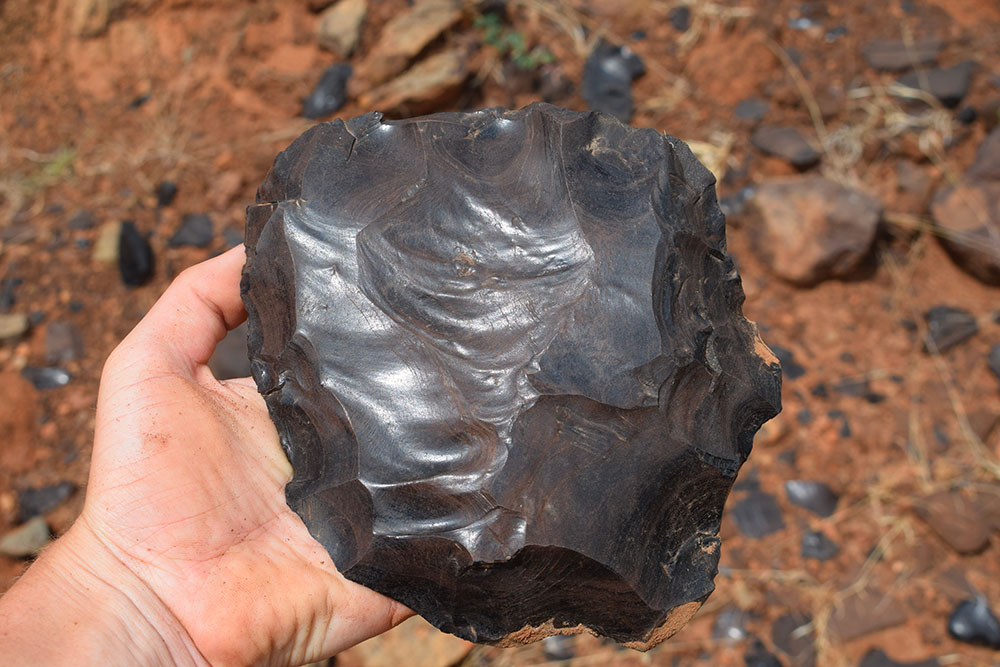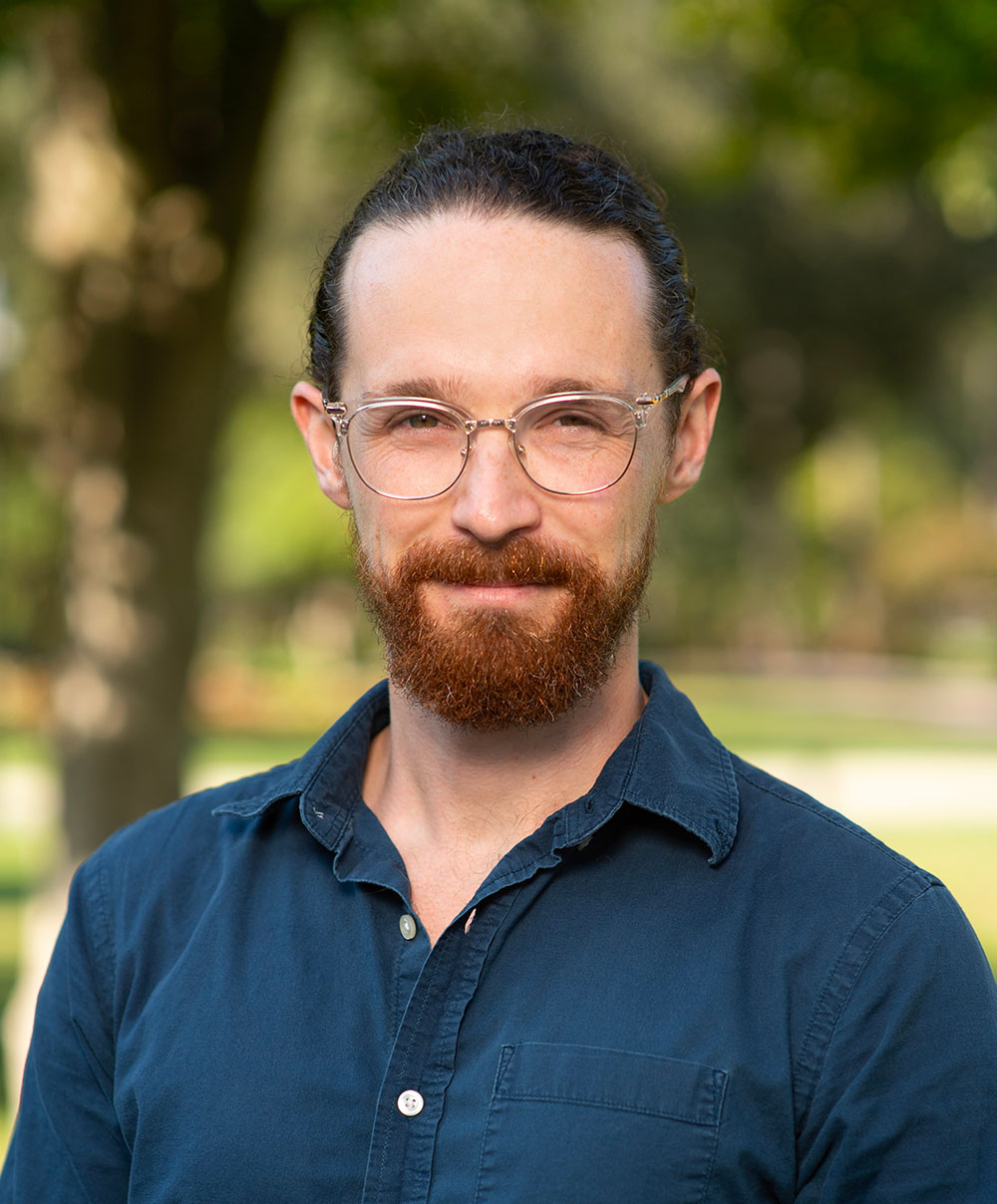Pôle thématique principal : SYTES
Groupes de recherche : SOCC, TRAP
Groupes de recherche : SOCC, TRAP
Thématiques de recherche : Sociétés de chasseurs-cueilleurs de la fin du Pléistocène et du début de l'Holocène en Afrique. Je m'intéresse à l'organisation de la technologie lithique des chasseurs-cueilleurs, notamment à l'approvisionnement en pierre. Mes recherches explorent comment l'organisation technologique peut être étudiée pour comprendre les changements évolutifs et démographiques majeurs des cent mille dernières années en Afrique.
Research themes: Late Pleistocene and early Holocene hunter-gatherer societies in Africa. I am interested in the organization of hunter-gatherer lithic technology, especially stone procurement. My research explores how technological organization can be studied to understand the major evolutionary and demographic changes of the last hundred-thousand years in Africa.
Périodes : MSA, LSA, late Pleistocene, MIS 5-2
Periods of interest: MSA, LSA, pléistocène supérieur, MIS 5-2
Periods of interest: MSA, LSA, pléistocène supérieur, MIS 5-2
Méthodes : technologie lithique, gitologie de l’obsidienne, spectroscopie de fluorescence, analyses morphométriques
Methods: Lithic technology, obsidian sourcing, portable XRF spectroscopy, morphometric analyses
Methods: Lithic technology, obsidian sourcing, portable XRF spectroscopy, morphometric analyses
Région d’étude : Afrique de l'Est (Ethiopie, Kenya)
Study area: eastern Africa (Ethiopia, Kenya)
Study area: eastern Africa (Ethiopia, Kenya)
Parcours:
- 2024-2025: Chercheure postdoctorale Fondation Fyssen au Cultures – Environnements. Préhistoire, Antiquité, Moyen Âge (CEPAM), Université de Nice, Sophia-Antipolis CNRS, France.
- 2023: Lecturer, Coastal Carolina University Department of Anthropology, Conway, South Carolina, USA.
- 2022-2023: Lecturer, Coastal Carolina University Department of Anthropology, Conway, South Carolina, USA.
- 2018 – 2022: Doctorate in Anthropology (University of Florida). Dissertation title: "Hunter-Gatherer Stone Economies and Technological Landscapes in the Late Pleistocene Horn of Africa: Perspectives from the Baantu Obsidian Source and Mochena Borago Rockshelter". Committee Chair: Steven A Brandt; Committee members: Kenneth E. Sassaman, Daniel Contreras, Courtney Sprain.
- 2015 – 2018: Master of Arts in Anthropology (University of Florida)
- 2019-2020: Fulbright Fellow, U.S. Student Fulbright Program, Ethiopia
- 2011-2014: Bachelor of Arts in Anthropology (Stony Brook University)
Research Interests and approaches
Stone tool makers in Africa have used obsidian for almost two million years and in areas that saw dispersing populations of mobile hunter-gatherers, obsidian procurement and reduction patterns can reveal patterns of variability in human behavior at multiple spatial and temporal scales. Quarries and archaeological sites often preserve deep histories of stone procurement and lithic manufacture. Studying these patterns of technological organization opens a window into important periods of ecological and human evolutionary, demographic, and cultural change.
My research investigates these changes through the study of lithic technological organization. As a member of the Southwest Ethiopia Archaeological Project I am currently overseeing obsidian sourcing at the Late Pleistocene site of Mochena Borago Rockshelter, whose late pleistocene occupations document important periods in human evolutionary and cultural history in the Horn of Africa.
My ongoing work in the southern regions of the Ethiopian Rift is aimed at piecing together the obsidian procurement and exchange networks that emerged during the later Pleistocene, especially Marine Isotope Stages 5-2. This was a period when hunting and gathering populations were moving across the continent and practicing new forms of exchange and settlement, but so far archaeologists have documented only a handful of sites preserving occupations during arid periods, when ecological refugia would have been essential for sustaining human settlement.
In addition to identifying and characterizing the obsidians sources what would have formed nodes around which people would have procured their raw materials, exchanged with each other, and settled,, I am exploring shifts in exchange and procurement through time, at well-studied sites like Mochena Borago, and at new sites in the South Omo region and northern Turkana Basin.
Hunter-gatherer raw material use was likely deeply embedded in localized procurement involving repeated engagements with natural and cultural landscapes. Lithic technological organization in this region must therefore be understood as an artifact of both adaptation to available resources, and long-term engagement with enduring lithic landscapes. It is this long term engagement that my work continues to explore.
Publications:
- Smith, B.D., Johnson, L.R.M., Brandt, S.A. (in press) Imports and Outcrops: geochemical characterization of the Baantu Obsidian Quarry, and artifacts from Mochena Borago Rockshelter, Wolaita, Ethiopia using portable X-Ray fluorescence. In: Johnson, L.R.M., Freund, K.P., Tripcevich, N. (eds) Selected Research Papers from the 2021 International Obsidian Conference: Global Archaeological and Geological Studies of Volcanic Glass. Contributions of the Archaeological Research Facility University of California, Berkeley. Berkley, California
- Brandt, S.A., Hildebrand, E.A., Vogelsang, R., Fisher, E.C., Kelsey, B., Lanzarone, P., Parow-Souchon, H., Smith, B.D., Taffere, A.M., Lesur, J. and Bermensolo, K. (2023). Mochena Borago Rockshelter, Ethiopia. InHandbook of Pleistocene Archaeology of Africa: Hominin behavior, geography, and chronology (pp. 461-482). Cham: Springer International Publishing.
- Hildebrand, E.A., Smith, B.D., Gebre, D., Getachew, M., Girma, A. (December 2022) Recent archeological reconnaissance in South Omo Zone, Ethiopia. Nyame Akuma (98), 20-28.
- Smith, B. D. (2018). Hunting in yellow waters: an ethnoarchaeological perspective on selective fishing on Lake Turkana. Quaternary International, 471, 241-251.
Extrait de la production scientifique (HAL)
Filtrez par type
Ou filtrez par année



